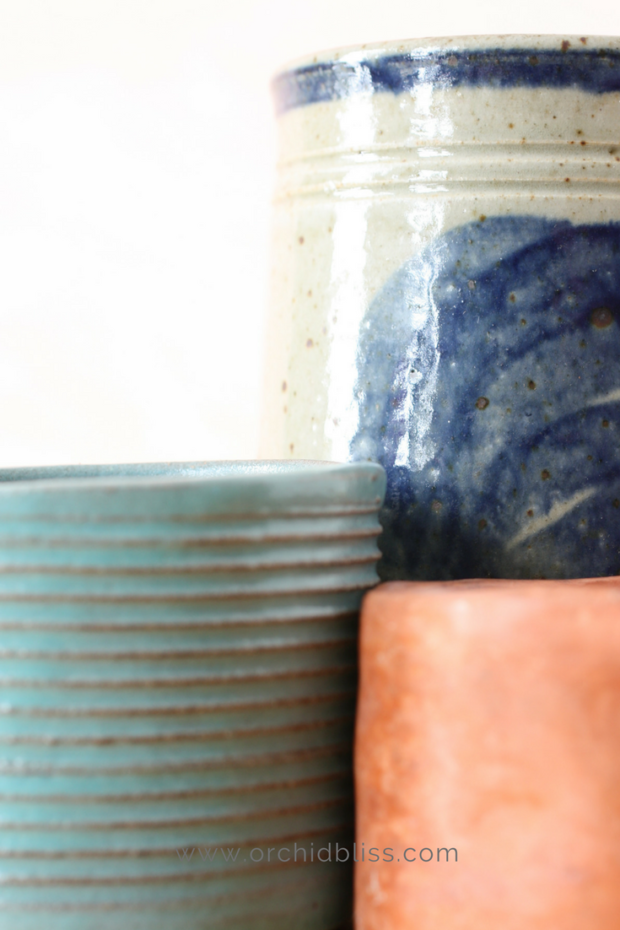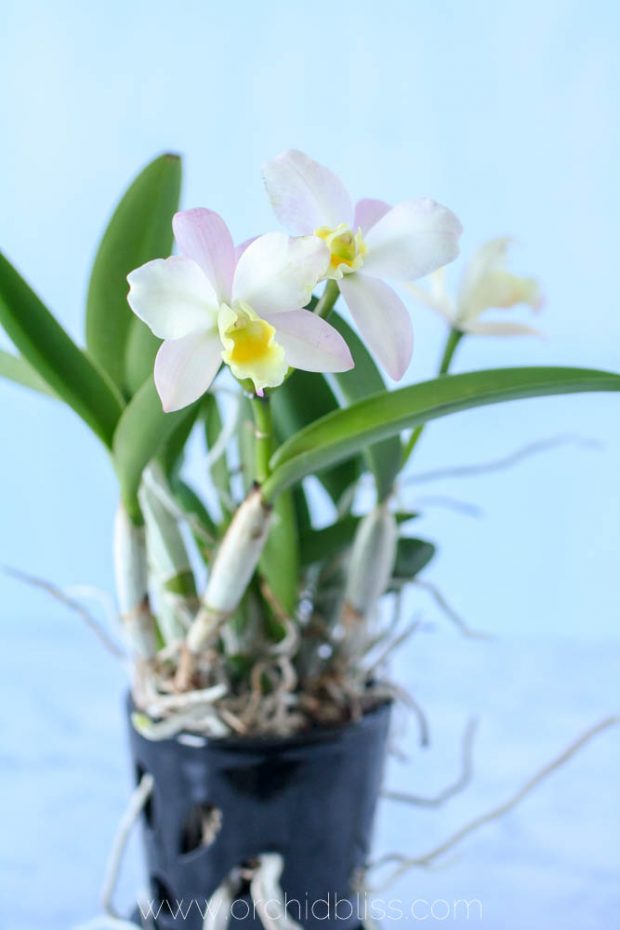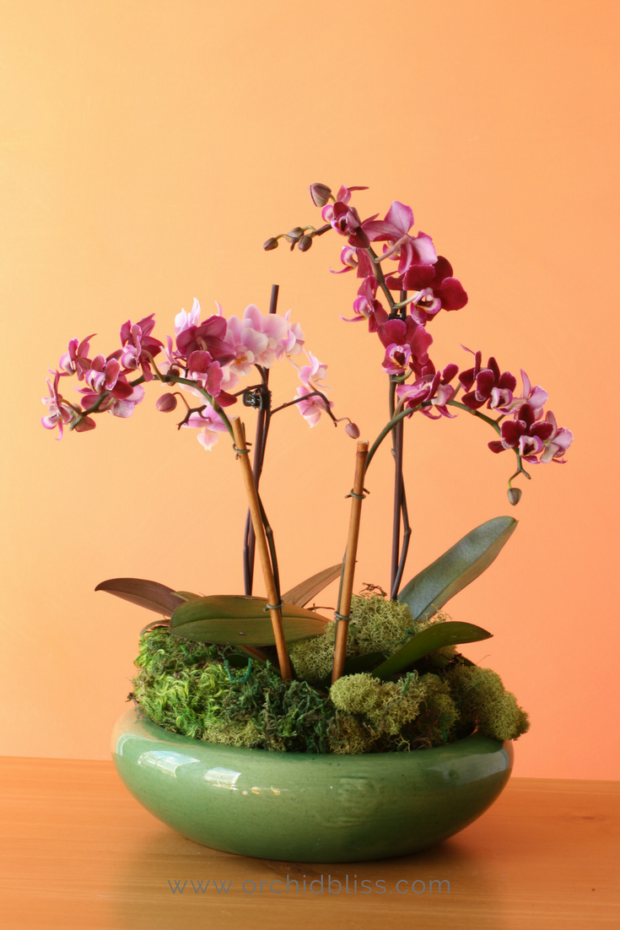As an orchid enthusiast, I’m always looking for ways to improve my orchid growing skills One simple but effective technique is using clear plastic pots In this article, I’ll explain why clear plastic pots are so great for orchids and share tips on how to use them successfully.
Why Use Clear Plastic Pots?
Clear pots have several advantages over traditional clay or plastic orchid pots:
-
Visibility – The transparency allows you to easily monitor root health, moisture levels, and when it’s time to repot without disturbing the plant. This takes the guesswork out of orchid care.
-
Air circulation – Clear plastic promotes increased airflow around the roots which orchids love. Good air circulation prevents diseases and promotes growth.
-
Light penetration – Light can reach the orchid’s root zone which is beneficial. Photosynthesis by the roots and root hairs aids in plant growth
-
Drainage – Clear orchid pots have excellent drainage. Plastic pots have more drainage holes than clay, and the plastic construction prevents waterlogging. Good drainage prevents rot and disease.
-
Repotting ease – Repotting is simpler since you can clearly see the root ball and know when the plant needs a larger pot. Sliding the orchid out is easier as well.
-
Affordability – Clear plastic orchid pots are typically more affordable than ornamental pots. This helps keep costs down, especially when you have multiple orchids in your collection.
Tips for Using Clear Plastic Orchid Pots
Follow these tips to maximize the benefits of clear pots for your orchids:
-
Match the size – Choose a pot that fits the orchid’s root system with a little room for growth rather than going too large. This prevents wobbling and keeps the orchid stable.
-
Use slotted pots – Slotted clear pots improve airflow even more. Make sure to place the slots vertically to support the orchid.
-
Try cone pots – Cone pots are shaped wider at the top and narrower at the bottom which is ideal for orchid roots. The cone shape promotes excellent drainage too.
-
Use orchid bark mixes – Pair clear pots with a chunky orchid potting mix like fir bark. This improves drainage and air pockets for healthy roots.
-
Add Styrofoam peanuts – Place Styrofoam peanuts in the bottom of oversized clear pots to take up space and prevent wobbling.
-
Sit in trays – Place clear pots in trays or decorative outer pots to improve stability and humidity. Make sure the inner pot isn’t submerged in water.
-
Use for moth orchids – Clear pots work wonderfully for Phalaenopsis moth orchids which need high light. The clear sides allow light to reach the roots.

Glazed Pottery and Ceramic Orchid Pots
There are so many beautiful pots that it is hard to resist using these to house our orchids. There is something very special about a piece of hand-thrown pottery. It’s art. Unlike a terracotta or a plastic pot, pottery can be pricey.
Decorative orchid pots can be used as a secondary pot with clear plastic housing the orchid, making it easy to inspect the roots and the moisture content. I like the base of the pottery to be narrower than the plastic pot so that the plastic pot sits above the base of the pottery. This ensures that excess water will drain out the plastic pot and catch in the secondary pot while keeping the orchid’s roots out of the water.

Orchid Pots with Holes
When many of us think of orchid pots we think of pots with a lacework of holes in the side of the pot which allow for air circulation around the roots. It is also easy to see how the roots are doing and to check for moisture.
When purchasing one of these pots make sure that the holes aren’t too big. You don’t want the potting media to come out when watering. When you do water, be sure to set the pot in a deep saucer or over a drain to catch the water that runs out. When watering, water deeply. The drainage holes keep the orchid from sitting in water.
When using these pots, do not use a clear liner pot. If the orchid soil obstructs your view of the orchid’s roots, use the dampness, or dryness, of the orchid’s potting medium as your watering guide. These pots come in a wide variety of colors. You can purchase hand-potted or mass-produced pots, but they are usually all made from ceramic. Handmade pottery is gorgeous but comes with a price tag. When watering with one of these pots, you may want to set the orchid in another larger pot while the potting medium absorbs water. Be sure the larger pot is scrupulously clean to avoid inadvertently spreading disease.

In its natural habitat, most orchids grow on trees and on rocks, and a few in the soil. An orchid growing on a slab of wood can really make a statement. These plants can require high humidity levels and needs to be watered from above. Or, you can soak a mounted orchid in a large bowl or basin of water.
If you would like to create an arrangement for your orchids, a wide, shallow tray or basket will do the trick. When making an orchid display, I leave the orchids in the pots they came in (both the plastic and the pottery) and set them in the tray. To fill in gaps I place prepackaged moss between pots.

Choosing the best the pot for your orchid will do more than maximize the orchid’s visual appeal.
If possible, use an inner clear plastic pot with plenty of drainages that will aid you in the care and maintenance of your orchid. Then, finding just the right outer pot will showcase your orchid as the living sculpture that it is.
A well-chosen pot can make the difference between an orchid and AN ORCHID.
Keep your orchids looking their best. Here’s how to prevent limp, leathery leaves and rotten roots. Download my free cheat sheet on how to prevent limp leaves and rotten roots. Click here for the super helpful cheat sheet.
Best Pots for Growing Orchids – Do You Need Special Orchid Pots?
FAQ
Should orchids be in clear plastic pots?
Clear pots are best for orchids!
Should orchids be kept in plastic containers?
No, orchids don’t have to be in plastic containers, but they are commonly sold and grown in them. Plastic pots are a popular choice for orchids because they are lightweight, affordable, and readily available in various sizes.
Do orchids prefer tall or wide pots?
But for many orchids, choose a pot whose top diameter is about a third to a half of the height of the orchid plant. So, if you have a 10-inch tall orchid, a 4- or 5-inch pot would work well. An exception is Dendrobium; it can be 24 inches tall, but grows best in a 4-5- inch pot.
